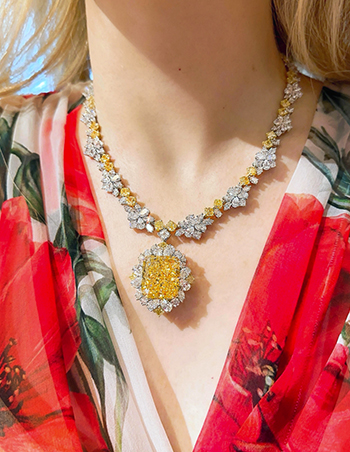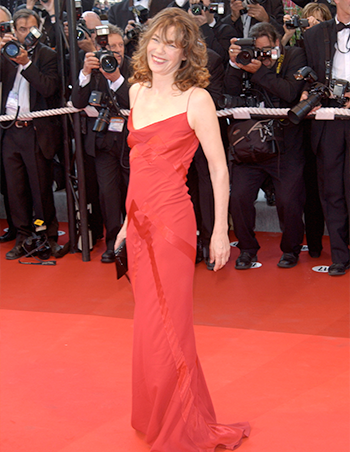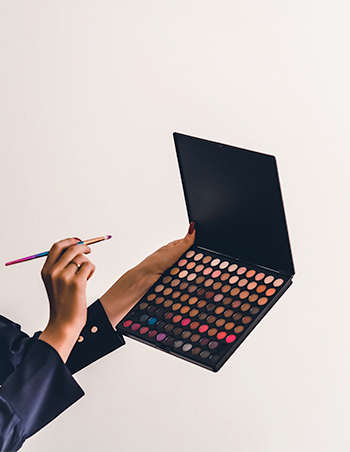
The Strange and Exciting History of Your Makeup
Date: 08/25/2023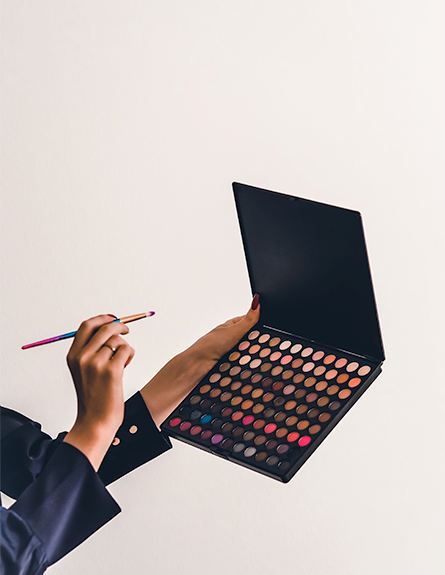
What makeup did people wear last year? How about in 4000 BCE? Read the article below to find out all about the history and origins of the makeup and cosmetics we know today!
One of the things I love most about fashion are the ways in which different styles reflect some of the ‘trending’ elements of social culture throughout history. From Chanel’s revolutionary suit design in 1920, to the 90s punk aesthetic, to the experimental ‘mash-up’ fashions of today, our clothing has continued to provide subtle commentary about what’s going on in other parts of our social sphere.
Yet this idea got me thinking…what about makeup and other cosmetics? Certainly we can tell from any ‘makeup through the ages’ video that the history of makeup has followed a wild and varying trajectory. It’s only now that we can look back and see how drastic some of these evolutions have been, and how they relate to our history as a species.
In fact that’s why I want to take a moment today to explore the strange and exciting history I discovered when I started looking into the history of makeup from the dawn of man. Not only do I think it’s a fascinating exercise in talking about changing beauty standards over time, but I think (like fashion) this history can act as a sort of ‘time capsule’ that gives us more immediate access to the attitudes and daily lives of people as far back as 4000 BCE.
So, are you ready to use makeup as a lens to explore what life was like for humans over the last few thousand years?
Then join me as I share with you the true origins of the makeup and cosmetics we use today!
Ancient makeup trends
When I say that makeup has been around almost as long as we have, I mean it. Indeed, most archeological sources point to the fertile areas of ancient Egypt as being among the first locations where remnants of makeup and cosmetics were found almost 6000 years ago.
Of course, most of us are familiar with this ‘look’ due to film media and depictions on ancient hieroglyphs, where Egyptian peoples of any gender are marked by heavy black eyeliner called ‘kohl’, drawn in a sharp angle away from the eye. What is interesting about this kind of ‘face paint’, which also included rouge, white powder, and malachite eye shadow, is that it served the specific purpose of appealing to the Egyptian gods. Indeed, the green color in the eye shadow is said to represent the Horus and Re, and was used to honor those deities during ceremonies and rituals. Even more amazing were the ingredients these ancient peoples came up with to adorn their faces with paint. For example, Egyptians created lipsticks with shimmering effects thanks to a pearlescent substance made from fish scales–a practice that is actually still in use today!
Sadly, these experimentations also brought with them the dark underbelly of makeup and cosmetics that has been sustained throughout its entire history; that is, not all the products we create are healthy, and in fact, some are downright hazardous. If we flash forward for a moment to the 18th century, this truth becomes even more apparent as we discover just how poisonous the makeup used by England’s Queen Elizabeth I was. If you’re wondering, she used a mixture of white lead and vinegar, which has since been correlated with her health problems later in life.
Still, as the Egyptians continued to use their makeup in relationship with religious culture, other parts of the world began adopting similar ‘painting’ techniques to enhance the natural image of the face. For instance, in the Middle East (after the advent of Islam), perfumed creams became popular, along with ointments, powders, and pastes that would lighten the skin. And while only female slaves or singers would use the North African-inspired style of darkening the eye and reddening the lip, brides and their lovers were known to use decorative henna on the skin or to dye their hair to elevate the beauty of their upcoming marriage.
Around the same time, in the Far Eastern provinces of China, similar trends that involved whitening the face became the norm, while the beauty of the flower came to symbolize the inspiration for most Chinese makeup designs. In fact, a story is often told which tells of a Chinese princess resting under a plum tree, when a plum blossom landed softly on her face. The imprint of the flower, resting just above her eyebrows, is said to have inspired other women of that land to decorate plum flowers on their faces…a trend in makeup that is said to have lasted in the country for over 1000 years!
Not too far away in Japan, the class of geishas, as well as Japanese royalty, were similarly known for soft white faces bathed in rice powder and lipstick made of crushed safflower petals. Yet we find a tradition here that departs from any other ‘beautifying’ ceremony known across the globe. During ceremonies which gave a geisha her independence (sort of like a graduation) the use of black paint to coat the teeth was required as a symbol of that geisha’s ‘graduation’. What it would have been to witness such a smile!
Even amid some strangeness, however, ee can see from these ancient references to makeup throughout our histories a recurring preference for pale, light skin as a beauty standard. In the 16th century, European women were even known to bleed themselves to achieve the palest look possible. Not that we should trust their methods (obviously), since these same women often plucked away their eyebrows to maintain the image of a large forehead–which at that time was all the rage. In fact, to prove a point about evolving beauty standards and applications, let’s take a look at a few more silly makeup trends of that era, if only for a good laugh:
- Egg shells used to be ground with perfumed water to make face powder
- Lips were reddened by sucking lemons for a long period of time
- Men wore bits of silk patches to cover up blemishes or shaving nicks. Some even used these as decoration, turning patches into stars, animals, or ships. Apparently, these patches could at one time tell you a man’s political affiliation, depending on which side of his face he wore it on.
As trends changed and evolved though, a new makeup ‘trend’ began to evolve; that is, we began to see makeup and cosmetics as something ‘dirty’ or ‘vulgar’ on a poor person, but was otherwise ‘high-class’ when adorning the face of royalty. So while in Spain only prostitutes would wear makeup in the middle ages, not far away in Italy, women wore bold red lipstick to signify their heightened, and even royal, status.
So why is it that some places revered the use of makeup, while others did not? As far as the history of makeup goes, it might have something to do with religion. In fact, when you dig into it, you will soon find that makeup is mentioned in the bible…though as you may have guessed, the work is directly against the use of the stuff. For example, the Book of Jeremiah argues against false vanity and cosmetics use, saying “And you, O desolate one, what do you mean that you dress in crimson, that you deck yourself with ornaments of gold, that you enlarge your eyes with paint? In vain you beautify yourself.” In another section, the villainous queen Jezebel has painted eyes and adornments on her head, which insinuates yet another connection between wickedness and makeup.
Thankfully, some parts of the world didn’t care for this kind of thinking, and continued the tradition of open and abundant makeup use well into the Byzantine era, although the citizens there apparently gained a reputation for vanity as a result. Nevertheless, makeup became a trend that rose and fell in popularity as time went on. So while the Renaissance era saw a dramatic (mind the pun) increase in makeup to enhance all forms of physical beauty, by the 19th century, monarchs like Queen Victoria were declaring makeup as vulgar, and instead prioritized natural beauty. In fact it was around this time that women and men began applying makeup more in secret, so as not to seem ‘done up’. Some even used drops of belladonna to dilate their pupils and ‘naturally’ make their eyes appear larger!
When I then compare this sort of ‘restricted’ outlook on makeup to the wide-spread adoption of makeup we’re experiencing today, it’s hard for me to imagine a world where only a few were free to experiment with the fun that makeup can offer. In fact, that’s why I find it so interesting to look into how our preferences for certain makeup styles have continued to evolve into the 19th, 20th, and 21st centuries–as I plan to do next.
The changing face of beauty through makeup
Although the use of makeup for a while dropped out of regular use, by the end of the 19th century (and into the 20th) a few developments were swaying the popularity of makeup and cosmetics back into the fast lane. Not only were cosmetics and makeup companies coming up with new and innovative ways to distribute makeup, but women were coming up with their own cosmetics recipes at home, with some making widespread sales of their products a viable income. In that small way, cosmetics and makeup were at one time a way for a woman to explore her beauty, and her financial freedom. One such woman to do this was the famous Elizabeth Arden, who eventually opened her first salon in 1910!
Around the later part of the 19th century, too, a few inventions had a subtle effect on the attention we pay to physical beauty. For example, mirrors were becoming more popularized and were more easily manufactured, while commercial photography gained interest in terms of using ‘beauty’ as a feature of advertising. From these and many more influences, it would seem, our self-image began to be more focused on appearance and, and thus, the potential to improve one’s ‘looks’ using makeup.
Very quickly then, makeup ‘styles’ began to move in and out of fashion, with certain decades becoming quickly associated with a certain ‘look’ or application of makeup. By the 20th century, there was almost no doubt that makeup had become a permanent part of our social culture (at least out here in North America), so much so that there have been entire books written on the subject of beauty in relation to cosmetics. And while I’m sure you already have a bit of an image in your head for what was ‘in fashion’ when it comes to makeup from the beginning of the 1900s to now, I still want to explore each of these decades to see what kinds of makeup were most popular, and what men and women were using throughout history to curate a sense of beauty through face paint and other cosmetics.
Why not start right at the turn of the century!
1900
Recovering from the ‘taboo’ of makeup that marked the period between 1870 and 1900, women and men at this time mostly refrained from overdone makeup unless on stage. Inspired by their favorite stage actors and rising celebrities, these same men and women soon began to adopt more and more elements of ‘stage’ makeup into their everyday lives. Sadly, makeup and cosmetics were not widely available outside of what one could make at home, which meant a focus on simple lip stains, cheek rouges, arched eyebrows, and powdered skin akin to a porcelain doll were the most popular. Though, to get these effects, women were said to use burnt matchsticks to darken their eyelashes, or poppy petals to stain their lips:

While you would think this ‘at-home’ practice would yield great natural products (and it did), this was also the time that face enameling – to literally apply paint to one’s face – became popular among the wealthy–yet another continuation of the preference for light, white skin. Terribly, those who adopted this technique often suffered young deaths (as young as 29), since the main ingredient in these face paints was arsenic!
Even more toxically, as advertisers and marketers soon adopted photography in their ads, the dawn of makeup propaganda was also at hand. Very soon, ads began to suggest that women wear makeup due to the responsibility to be beautiful. (Gross!). As a result, and as some ads were caught saying, makeup was said to keep men from having affairs with younger women, or that it would help women get better jobs, among other great lies about makeup’s benefits.
As women of the 21st century, I am so grateful to think we are all well aware of the effect this has had on our collective concepts of what is beautiful–and am hopeful we are coming to a place of recognizing that all faces are in fact lovely, with makeup, or without.
1910
As trends evolved into the early 1900s, lipsticks and mascara arrived on the scene to create a more dramatic effect on the face. Around this time Maybelline patented their mascara formulation, and Max Factor introduced the first commercial eye shadow, basing the formulation on Turkish makeup techniques that used henna extract. The dark-eyed ‘glam vamp’ look suddenly became all the rage, with the preference for pale skin still very much central to most styles:

Yet the past was still clinging on. It would seem that some people still felt these looks to be vulgar–in 1915 for example, a piece of Kansas legislation attempted to make it a misdemeanor for women younger than 44 to ‘create a false impression’ using cosmetics or makeup.
Not that legislation could stop the wave that had started in the world of beautification, and soon the first powder and blush compacts made their way into popular use, including the first tubed lipstick, invented by Maurice Levy leading up to the roaring 20s.
1920
As you can probably guess, the flapper style of fashion that took hold in the 20s also impacted the ‘face’ that people would put on before going out for the night. And while day-time looks were relatively low-key, this era would be the culmination of what was becoming a bold ensemble of dark eyes and dark red lips, with the addition of red nail polish and a brand new ‘fashion’ statement: the sun tan! (haha). Actually, if you didn’t know, this ‘fashion statement’ was popularized by Coco Chanel, who had naturally olive skin herself. As a result, pale skin was ‘out’ and a youthful glow became the norm, attained through bigger and blusher cheeks!

Other than that, eyebrows became bolder than ever before thanks to the invention of a superior eyebrow pencil that used the same main ingredient as Crisco (that era’s ‘wonder product’): cottonseed oil. By the end of the decade, women were overwhelmed with makeup options. Soon, pharmacies began hosting makeup counters across America, giving consumers access to more than 3000 face powders, and more lipstick options than they could possibly wear in one lifetime! It’s said that makeup sales had already exceeded the $1B mark by 1922, and I imagine the profits only went up from there.
Sadly though, this era did mark one change that we are only now coming back to: men wearing makeup. To this point in history, men wearing rouge or powder, or darkening their lashes, was quite the norm. Yet with cosmetics advertising largely targeted at women, and a more masculine ideal taking form that didn’t include makeup, the trend died quickly and wearing makeup for men was reserved for the theater, or for underground drag.
1930 and 1940
Likely because of the invention of the pencil liner, ultra thin eyebrows soon became all the rage across these two decades, and you can see it in the faces of famous celebrities of the time such as Greta Garbo. Not to mention, while foundation had been gaining popularity for a while, it was around this time that so-called ‘pancake makeup’ truly gained popularity, particularly to create a kind of matte finish when on-screen and off.

Now, while in the 20s the flapper style of makeup created the illusion of a narrow face with small, heart-shaped lips, these two decades saw rouges and contour products being created to give the effect of a wider face, as you can see represented in the photo above. Lipstick application also evolved to give a fuller look to the lip, while the dark ‘vamp’ look lightened up substantially, and began to include more eyeshadows with major pops of color.
Indeed, I don’t wonder if the war effort had something to do with the evolution of makeup at this time. Women wanted to look healthy, with a glow, as opposed to pale. In fact, during the war, one of the few items that did not get rationed was lipstick! The idea here being that lipstick was ‘necessary to maintain national morale’. This may be just one reason why our worker woman icon, Rosie the Riveter, is often photographed wearing lipstick!
Another thing I just had to include: an item that was rationed during the war was nylon stockings. As a result, women started using leg makeup to give the illusion of wearing nylons! There were even products specially marketed for that purpose at the time! What?!
1950
Finally, after so many years of RED (red lipsticks, red nails, red blush), the 1950s saw a slight transition in color, more towards periwinkle blues and pinks. This soft ‘cloud’ effect was also complemented with the ultra-heavy foundations that we would never dream of applying now, topped in light, flesh-colored powder. Finally, the ultra-thin eyebrow seemed to fall out of fashion, allowing our original brows to shine through in a more natural way:

And for those of us who are in love with a winged eye-liner effect, in 1950 the cat-eye made its debut and continued to gain a timeless sense of popularity thanks to incredible stars like Audrey Hepburn and Marilyn Monroe. This was a fun yet elegant addition to the evolving ‘trends’ in makeup of the day, where the focus was still very much on the bold, wide lip, with softer emphasis on the eyes that would disappear in the very next decade.
1960
When I think of 1960s makeup, I immediately think of Twiggy and her huge eyes with extra-long, extra-bold eyelashes on the upper and lower lid. As I learned recently though, this is exactly what marks this decade of makeup as different from the eras before it: no longer were lips and lipsticks the main focus of a look; instead, mascara, false eyelashes, and even drawn-on lashes were used to emphasize the eyes more than any other feature on the face.

With this new emphasis, the practice of contouring with eyeshadow became all the rage, while women were more and more prone to matching their makeup colors to the colors of their outfit. This era also marked a more exploratory phase in makeup, where images began to crop up of makeup being used in entirely out-of-the-box ways, marking the practice as more of an art form than merely a way to elevate one’s beauty. As well, and largely because of Elizabeth Taylor’s appearance in the film Cleopatra, that kohl-eyeliner look, reminiscent of the origins of makeup, started making its way back into center stage, outlined by a dark, bold blue.
1970
What is so special about 1970s makeup aside from the minimal, hippie aesthetic? Well, prior to this, makeup had been targeted at white audiences, with the goal of producing a pale, effervescent look in its wearers. Yet in the 1970s, at least five companies cropped up to serve those with much darker skin. Soon, face makeup and lipstick began to be released that didn’t disappear on black or brown tones; instead, foundations and powders (and the marketing for these products) celebrated diversity, and tested the market for differing skin types to much success.

Otherwise, the ‘flower girl’ trend inherent to the 1970s and the onset of second-wave feminism spurred protests against the makeup industry, whereby makeup was merely another way to enforce a specific kind of femininity–when in fact women should be free to be free-faced. At the same time, by night, makeup looks were much more sexualized than ever before, with a big focus on dramatic bold colors and contouring. To the benefit of makeup wearers at the time, makeup technology was also improving, meaning these looks became elevated versions of the powdery, historical counterparts from years passed. Truly, makeup was starting to look naturalized, even as women used more of it. Like in the early part of the century, a woman’s place in the cosmetics industry became more sought-after; this was actually the decade where Avon introduced the concept of a door-to-door saleswoman, allowing more opportunities for women to take their finances into their own hands.
1980
If there is one thing that marks 1980s makeup…it’s the blush. And although other decades showcased a heavy set of blush, none had gone so far as to make it the focal point of any look. Truly, whatever eye or lip the wearer chose, it was sure to compliment an extravagant amount of blush in deep pink or plum.

In fact, as newer tones and deeper pigments became available on the market, likely inspired by the explosion of color adopted by major stars of the time (including David Bowie), women and men soon came to adopt a dramatic, bold style that – for the first time – included elements of bright neon.
From stenciled shapes like stars and lightning bolts, to bushier, bolder brows than ever before, the 80s were all about challenging delicacy with edgy statement makeup that made our parents embarrassed to be seen with us. I can even remember my friends experimenting with too much eyeliner, giving the gothic vamp look a bit of a resurgence. By contrast, others would use a ton of color on their eyelids, particularly purple, blue, or yellow. The higher your eyeshadow line went, the better, and best of all, you could top it all off with a new product on the market that decade: colored mascara!
1990
When I think of the 1990s, all I can remember is the intense amount of lip liner we all put on before a night out. And judging from the makeup trends from previous decades however, this era took from each to create its own sort of look. Returning to a bit of a pale base palette, many celebrity women of this chapter were recognized by their burgundy or dark-brown matte lips with dark lip liner tracing the edges. The vamp look was again in full swing as Angelina Jolie introduced the hollow-cheeked blush trend that would stick with us beyond the decade, and which perhaps inspired our obsession with makeup contouring today.

Sadly though, this decade brought about the return of the impossibly thin eyebrow. I know so many women who no longer have their eyebrows because of how heavily we all plucked them! To make matters worse, we kept the eyeshadow lines HIGH, making sure our icicle blue eyeshadow went far beyond our lid-lines. However awful that might sound in theory, in practice, the look really did work. Not to mention this was the era where many of us discovered the beauty of face jewelry, gems, and body glitter, allowing us to express our own unique makeup styles in a totally new and exciting way. Honestly, I have a ton of nostalgia for this makeup style, even though I likely wouldn’t practice any of these trends today–except maybe for a good 90s themed party!
The Makeup of Our 21st Century, and Beyond
As we entered the 21st century, I like to think that our population became so large and diverse that ‘trending’ looks became a little less wide-spread than they seemed back in the day. And while this may be true, what is exciting is that the bounds of what constitutes beautiful makeup (and beauty in general) have extended to include so much more in this century than the last. Now we are seeing movie makeup effects make their way into the mainstream, as well as apps that teach us the best ways to contour our face to our original face shape–as opposed to trying to change our faces to suit a certain ‘trend’.
Plus, both men and women these days allowed to toy with this fun and exciting art form. Not only that, but we are also enabling a true challenge to many of the more harmful stereotypes that are perpetuated by makeup and makeup advertising. No longer are we bound to a certain kind of presentation when it comes to makeup, and because we can now draw on inspiration from decades past for our makeup effects, we can work within the beauty industry knowing just how variable ‘beauty’ is. This prevents us from becoming trapped in a cyclical ‘trending’ cycle…I mean, just look at how much expression the Gen Z’ers have as they mashup completely different styles and eras of makeup and fashion!
In fact, they and many other generations are now, in the 21st century, using makeup in a transformative way to showcase the power of perception; they’re even elevating makeup to an artistic form with our faces as the canvas.
In challenging the old norms concerning makeup, then, I think we may also be reducing the pressure on women to use makeup as a part of their every day routine. Plus, as we continue to explore the bounds of what is possible with makeup, backed by an incredible history of cosmetic evolution, I think makeup trends will continue to help us explore the boundaries of beauty, and set us free from common stereotypes. And it almost goes without saying, but I am just in awe of the ‘looks’ that continue to surface on runways and in magazines across the globe. Aren’t you?
Until next time then,
All my love,

Lena
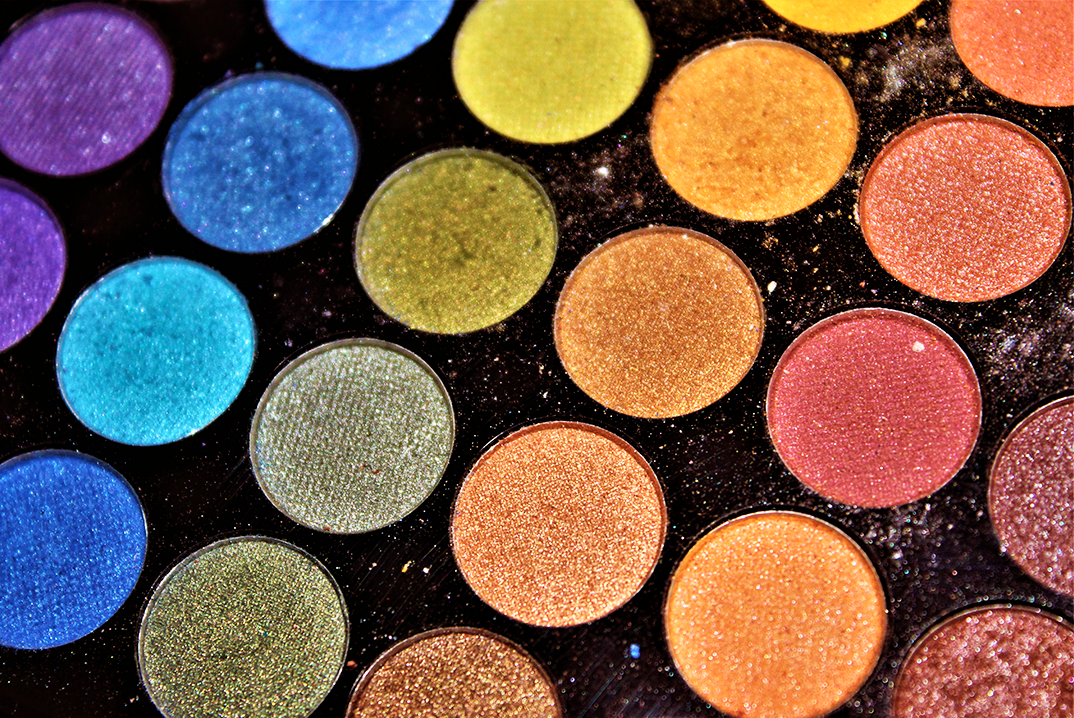
SUBSCRIBE
Get the latest updates, sneak peeks and more.
 Back To All Posts
Back To All Posts Previous Post
Previous Post